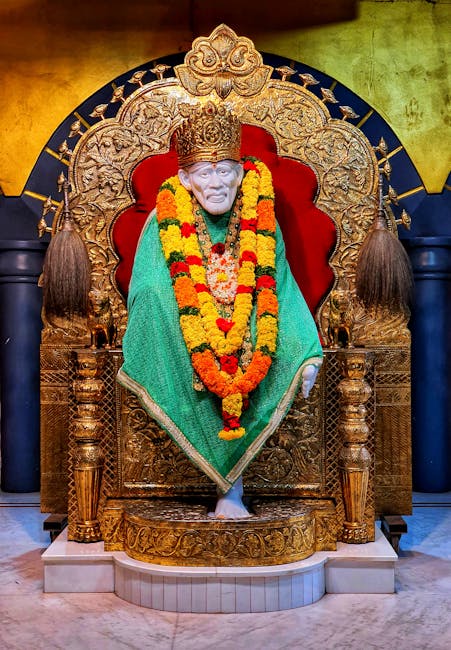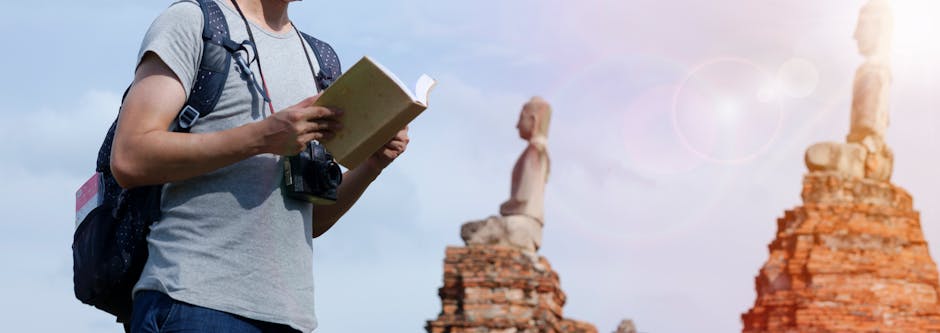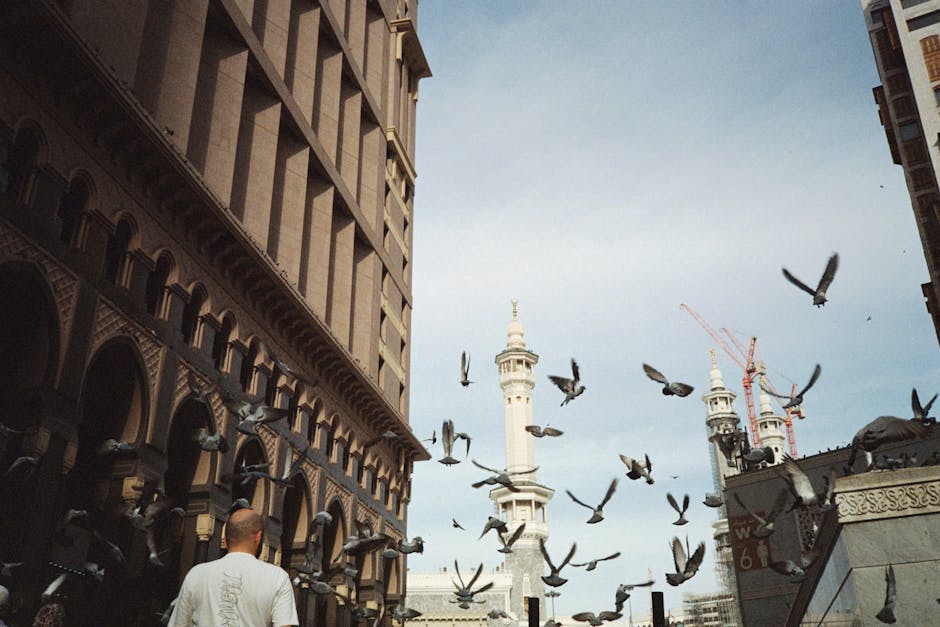Sanjusangen-do: A Journey Through a Thousand Arms of Compassion in Kyoto

Sanjusangen-do: A Journey Through a Thousand Arms of Compassion in Kyoto
Have you ever stood in a place that felt so overwhelmingly powerful, so deeply spiritual, that it left you breathless? That's how I felt when I first stepped into Sanjusangen-do Temple in Kyoto, Japan. It's not just a temple; it's an experience, a journey through a sea of golden Kannon statues that somehow manages to be both humbling and profoundly uplifting. I want to share my experience with you and, hopefully, inspire you to add this incredible place to your own travel list.
What Makes Sanjusangen-do So Special?

Sanjusangen-do, officially known as Rengeo-in, isn't your typical temple. Its name, meaning "Hall with Thirty-Three Spaces Between Columns," hints at its most striking feature: its incredible length. The main hall is the longest wooden structure in Japan, stretching a staggering 120 meters (394 feet)! But the real magic lies inside.
Imagine stepping into a vast hall bathed in soft light. Row upon row, stretching as far as the eye can see, are 1,001 life-sized statues of the Thousand-Armed Kannon. Each statue is crafted from Japanese cypress wood and covered in gold leaf, creating a shimmering spectacle that is truly breathtaking. It's not just the sheer number of statues, but also the artistry and craftsmanship that make Sanjusangen-do so unforgettable.
My First Encounter: An Awe-Inspiring Experience

I remember walking through the entrance and instantly feeling a sense of calm descend upon me. The sheer scale of the hall was overwhelming, but in a good way. My eyes darted from statue to statue, trying to take in every detail. Each Kannon has eleven faces to witness suffering in all directions, and a thousand arms to offer aid. The craftsmanship is exquisite; you can see the subtle differences in the expressions and poses of each statue.
Honestly, I felt a little intimidated at first. The sheer number of statues, all looking directly ahead, created a powerful, almost overwhelming presence. But as I walked further into the hall, I began to feel something else: a sense of peace and compassion. It was as if the collective energy of all those Kannons was radiating outwards, creating a feeling of serenity and hope.
Delving Deeper: Understanding the Significance

So, why 1,001 statues of Kannon? Kannon, also known as Avalokiteśvara, is the bodhisattva of compassion, a being who postpones their own enlightenment to help others achieve theirs. The thousand arms represent their ability to reach out and help anyone in need, regardless of their suffering. The eleven faces allow Kannon to see suffering in every direction.
It's important to remember that these aren't just decorative figures; they're representations of a deep spiritual belief. Each statue embodies the Buddhist ideals of compassion, wisdom, and the interconnectedness of all beings. To truly appreciate Sanjusangen-do, it's helpful to understand the meaning behind the statues and the principles they represent.
The Central Figure: A Masterpiece of Sculpture

While the 1,000 surrounding statues are remarkable, the centerpiece of Sanjusangen-do is the seated statue of the Eleven-Headed Thousand-Armed Kannon. This larger-than-life figure, created by the sculptor Tankei in the 13th century, is a national treasure and a true masterpiece of Japanese Buddhist art.
The central Kannon is even more intricately detailed than the surrounding statues. Its expression is serene and compassionate, its many arms radiating outwards in a gesture of boundless love and support. This statue is considered the embodiment of Kannon's power and grace and is the focal point of the entire hall.
The 28 Guardian Deities: Protectors of the Faithful

Surrounding the central Kannon and the 1,000 statues are 28 statues of guardian deities. These figures represent various gods and goddesses from Buddhist and Hindu traditions, each with their own unique characteristics and powers. They are believed to protect the faithful and ward off evil.
These guardian deities are incredibly diverse in appearance, ranging from fierce warriors to serene celestial beings. Each statue is meticulously crafted and painted with vibrant colors, adding another layer of visual interest to the already stunning hall. Take some time to observe these figures and learn about their individual stories and roles in Buddhist cosmology.
A Brief History: From Imperial Villa to Temple of Compassion

The story of Sanjusangen-do is as fascinating as the temple itself. It was founded in 1164 by Taira no Kiyomori, a powerful military leader, on land granted to him by Emperor Go-Shirakawa. Originally, it was part of an imperial villa. The Emperor commissioned the making of the statues.
Unfortunately, the original temple was destroyed by fire in 1249. However, it was rebuilt soon after, and the main hall remains largely unchanged from its 13th-century reconstruction. The central Kannon statue and many of the surrounding statues date back to this period, making them invaluable pieces of Japanese art and cultural heritage.
The Toshiya: An Archery Tradition

Sanjusangen-do is not only a place of spiritual significance but also a site of a unique historical tradition known as the Toshiya. During the Edo period (1603-1868), archers would compete to see how many arrows they could shoot down the entire length of the hall in a single day. This required incredible skill and precision.
While the original Toshiya competition is no longer held, a modern version takes place every January. Young men and women from across Japan participate in a ceremonial archery contest, dressed in traditional attire. It's a spectacular event that offers a glimpse into Japan's rich history and cultural heritage.
Planning Your Visit: Tips and Practical Information

Now that I've hopefully piqued your interest, let's talk about planning your visit to Sanjusangen-do. Here are a few tips and practical information to help you make the most of your experience:
- Location: Sanjusangen-do is located in eastern Kyoto, not far from Kyoto Station.
- Getting There: The easiest way to get there is by taking a Kyoto City Bus from Kyoto Station. Several bus lines stop near the temple.
- Opening Hours: The temple is open daily from 9:00 AM to 5:00 PM (November 16 to March 31: 9:00 AM to 4:00 PM).
- Admission Fee: The entrance fee is around 600 yen for adults.
- Photography: Unfortunately, photography is strictly prohibited inside the main hall. This is to protect the statues and maintain the reverent atmosphere. You can, however, take photos outside the hall and in the gardens.
- Time to Spend: I would recommend allowing at least an hour to fully appreciate Sanjusangen-do. You'll want to take your time to observe the statues and soak in the atmosphere.
- Best Time to Visit: Sanjusangen-do is beautiful year-round, but the best times to visit are during the spring (cherry blossom season) and autumn (when the leaves change color).
What to Expect: Etiquette and Considerations

When visiting Sanjusangen-do, it's important to be respectful of the temple and its religious significance. Here are a few etiquette tips to keep in mind:
- Dress Code: While there's no strict dress code, it's best to dress modestly. Avoid wearing revealing clothing.
- Silence: Maintain a quiet and respectful demeanor inside the hall. Avoid talking loudly or making unnecessary noise.
- No Food or Drink: Eating and drinking are not allowed inside the main hall.
- Remove Shoes: You will be asked to remove your shoes before entering the main hall. Slippers are provided.
- Offerings: You can make a small offering at the altar if you wish.
Beyond the Statues: Exploring the Temple Grounds

While the main hall is undoubtedly the highlight of Sanjusangen-do, the temple grounds themselves are also worth exploring. The gardens are beautifully landscaped and offer a peaceful respite from the bustling city. Take a stroll around the pond, admire the traditional architecture, and enjoy the serene atmosphere.
There's also a small museum on the grounds that displays artifacts related to the temple's history and the Toshiya archery competition. It's a great place to learn more about the cultural significance of Sanjusangen-do.
Nearby Attractions: Extending Your Kyoto Adventure

Sanjusangen-do is conveniently located near several other popular attractions in Kyoto, making it easy to combine your visit with other sightseeing activities. Here are a few nearby places you might want to consider visiting:
- Kiyomizu-dera Temple: This iconic temple is famous for its wooden stage offering stunning views of Kyoto. It's a bit of a walk uphill, but definitely worth the effort.
- Gion District: This historic district is known for its traditional wooden machiya houses and geishas. It's a great place to wander around, soak in the atmosphere, and perhaps catch a glimpse of a geisha heading to an appointment.
- Kyoto National Museum: If you're interested in Japanese art and history, the Kyoto National Museum is a must-visit. It houses a vast collection of paintings, sculptures, ceramics, and other artifacts.
- Fushimi Inari Shrine: Known for its thousands of vibrant red torii gates winding up a mountainside, Fushimi Inari is a truly unforgettable sight. Be prepared for a bit of a hike!
Reflections: The Lasting Impact of Sanjusangen-do

My visit to Sanjusangen-do left a lasting impression on me. It wasn't just the visual spectacle of the thousand Kannon statues, but also the sense of peace and compassion that permeated the hall. It was a reminder of the power of art, faith, and the human capacity for kindness.
I often think back to that moment, standing in the midst of all those golden statues, feeling a sense of connection to something larger than myself. It's a feeling I hope you get to experience someday. Sanjusangen-do is more than just a temple; it's a testament to the enduring power of compassion and a reminder that even in the face of suffering, there is always hope.
Frequently Asked Questions

Here are some frequently asked questions about Sanjusangen-do to help you plan your visit:
- Is Sanjusangen-do wheelchair accessible?
Unfortunately, the main hall has limited accessibility for wheelchair users due to steps. However, the gardens are accessible.
- Are there English-speaking guides available?
While there may not be dedicated English-speaking guides readily available, English pamphlets and signage are provided to help you understand the history and significance of the temple.
- Can I buy souvenirs at Sanjusangen-do?
Yes, there is a small shop on the grounds selling souvenirs, including miniature Kannon statues, amulets, and other religious items.
- Is it crowded at Sanjusangen-do?
Sanjusangen-do can get crowded, especially during peak season. Visiting early in the morning or later in the afternoon may help you avoid the largest crowds.
- Are there restrooms available?
Yes, restrooms are available on the temple grounds.
More than Just a Tourist Spot: Finding Personal Meaning

While I've given you practical advice and historical context, I believe Sanjusangen-do offers something deeper than just a checkmark on your Kyoto itinerary. Take the time to truly see the statues. Don't just snap a mental picture; let your eyes linger on the details, the subtle expressions, the position of each hand. Imagine the dedication and skill it took to create these works of art.
Think about the meaning behind the thousand arms. What does compassion mean to you? How can you embody the spirit of Kannon in your own life? Even if you're not a Buddhist, you can appreciate the universal message of empathy and the desire to alleviate suffering.
For me, Sanjusangen-do was a powerful reminder of the interconnectedness of all beings. It instilled a sense of responsibility to be kinder, more compassionate, and more aware of the suffering in the world. It also highlighted the beauty and resilience of the human spirit, our ability to create extraordinary things even in the face of adversity.
My Personal Recommendations for Making the Most of Your Visit

Beyond the standard tourist advice, here are a few personal recommendations based on my own experience:
- Go Early or Late: Seriously, try to avoid the midday rush. The quieter the temple, the more you'll be able to soak in the atmosphere and contemplate the statues.
- Sit in Silence: After you've walked through the hall, find a quiet corner (perhaps in the gardens) and just sit in silence for a few minutes. Allow yourself to process what you've seen and felt.
- Read Up Beforehand: Doing a little research on Kannon and Buddhist principles will enhance your understanding and appreciation of the temple.
- Sketch or Journal (Outside): Since you can't take photos inside, consider sketching a statue or writing down your thoughts and feelings in a journal after your visit. This will help you remember your experience more vividly.
- Allow Time for Reflection: Don't rush off to the next attraction immediately after leaving the temple. Give yourself some time to reflect on your experience, perhaps over a cup of tea at a nearby cafe.
Sanjusangen-do: A Spiritual Oasis in a Bustling City

Kyoto is a city filled with temples and shrines, each with its own unique charm and history. But Sanjusangen-do stands out as something truly special. It's not just a historical site; it's a spiritual oasis, a place where you can connect with something larger than yourself and find a moment of peace in the midst of a bustling city.
I hope this article has inspired you to visit Sanjusangen-do and experience its magic for yourself. It's a journey you won't soon forget. And who knows, maybe you'll even leave with a newfound sense of compassion and a deeper appreciation for the beauty and wonder of the world.
So, pack your bags, book your flight, and prepare to be amazed by the Thousand Arms of Compassion in Kyoto. You won't regret it!
Post a Comment